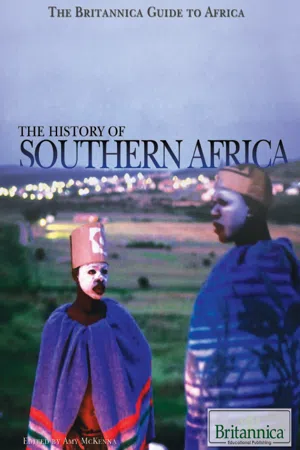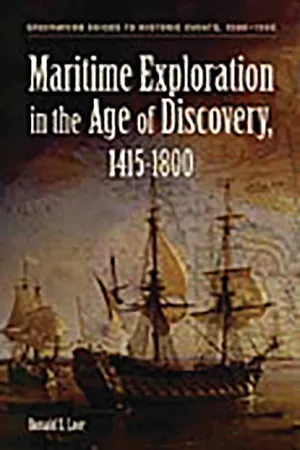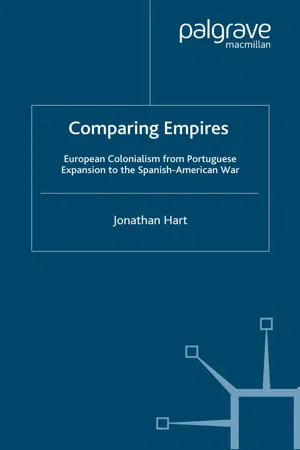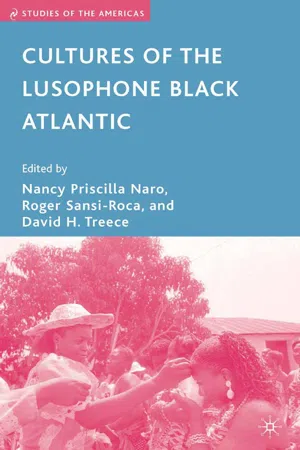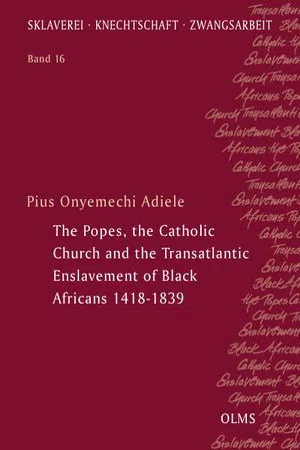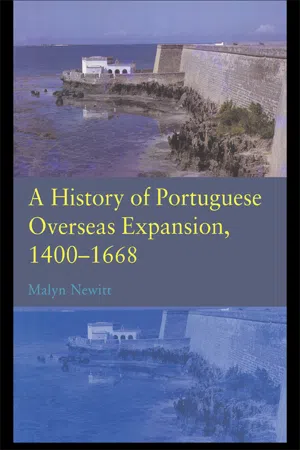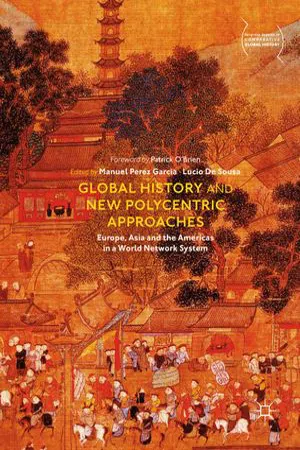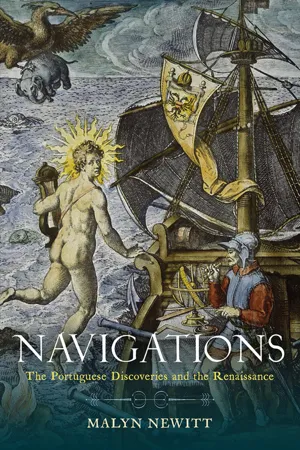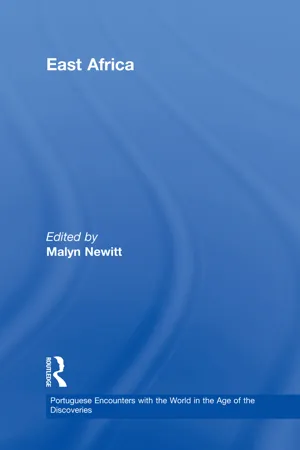History
Portuguese Exploration of Africa
The Portuguese exploration of Africa refers to the period from the 15th to 17th centuries when Portugal established trade routes and colonies along the African coast. Led by explorers such as Vasco da Gama and Bartolomeu Dias, the Portuguese sought to find new trade routes to Asia and expand their empire. This exploration had a significant impact on the history of Africa and global trade.
Written by Perlego with AI-assistance
Related key terms
1 of 5
12 Key excerpts on "Portuguese Exploration of Africa"
- eBook - PDF
Portuguese Brazil
The King's Plantation
- James Lang(Author)
- 2013(Publication Date)
- Academic Press(Publisher)
In 1520 the crown was sending its corregedores to most of the islands to supervise the captains and the town councils. 29 As the scope and frequency of Portuguese voyages in the South Atlantic increased, so did the degree of royal supervision. This trend, evident in the Atlantic Islands, can be seen in the development of the African trades. AFRICA Portuguese navigation along the African coast coincided with the con-stant warfare between Portuguese Christians and the Moors in North Africa. In 1415 the Portuguese established a military base in Morocco at 25 Ibid., pp. 240-242, 372-373; and Verlinden, Modern Colonization, pp. 161-180. 2 e OHveira Marques, History of Portugal, vol. 1, pp. 242-243, 374-376. 27 Godinho, Descobrimentos , vol. 2, pp. 452-454. 28 Ibid., pp. 543, 455. 29 Schwartz, Sovereignty and Society, pp. 18-19. 1 2 Portuguese Expansion Ceuta. From Ceuta and ports in the Algarve, such as Lagos and Faro, the Portuguese launched their attacks along the coast. 30 Contacts ranged from peaceful trade to piracy. The Portuguese raided Moroccan towns, seized merchandise, and sold captives into slavery. The king exercised a kind of monopoly over warfare in the region that the papacy officially recognized. 31 During the first half of the fifteenth century, trade, voyages of discovery, and warfare against Islam were complementary activities. This is evident in the career of Prince Henry the Navigator. Although he sponsored the early voyages of discovery, he was equally a crusader. He was governor of the Algarve and the military stronghold at Ceuta; his mastership of the Order of Christ placed a permanent military force at his command. There was hardly a more persistent advocate of the conquest of Morocco than Prince Henry. Only gradually did the Portuguese realize that in trying to outflank Islam in Morocco they had discovered new lands. - eBook - ePub
- Britannica Educational Publishing, Amy McKenna(Authors)
- 2010(Publication Date)
- Britannica Educational Publishing(Publisher)
UROPEAN AND AFRICAN INTERACTIONT he first Europeans to enter Southern Africa were the Portuguese, who from the 15th century edged their way around the African coast in the hope of outflanking Islam, finding a sea route to the riches of India, and discovering additional sources of food. They reached the Kongo kingdom in northwestern Angola in 1482–83. Early in 1488, Bartolomeu Dias rounded the southern tip of the continent, and just over a decade later, Vasco da Gama sailed along the east coast of Africa before striking out to India. Although the voyages were initially unpromising, they marked the beginning of the integration of the subcontinent into the new world economy and the dominance of Europeans over the indigenous inhabitants.THE PORTUGUESE IN WEST-CENTRAL AND SOUTHWESTERN AFRICA
Portuguese influence in west-central Africa radiated over a far wider area and was much more dramatic and destructive than on the east coast. Initially the Portuguese crown and Jesuit missionaries forged peaceful links with the kingdom of the Kongo, converting its king to Christianity. Almost immediately, however, slave traders followed in the wake of priests and teachers, and west-central Africa became tied to the demands of the São Tomé sugar planters and the transatlantic slave trade.Principal peoples of Southern Africa, 17th to mid-19th century .Until 1560 the Kongo kings had an effective monopoly in west-central Africa over trade with metropolitan Portugal, which showed relatively little interest in its African possessions. By the 1520s, however, Afro-Portuguese traders and landowners from São Tomé were intervening in the affairs of the Ndongo kingdom to the south, supporting the ruler, or ngola - Ronald S. Love(Author)
- 2006(Publication Date)
- Greenwood(Publisher)
During the last twenty years of Henry’s life, his program of exploration progressed rapidly, as new discoveries were made and commercial relations were established with local populations. The prince’s immediate goal was always to find an African gold supply to enrich the Portuguese Crown, strengthen the kingdom’s revenues, and make the voyages of exploration pay for themselves. Part of that goal was achieved in 1441 when an expedition returning from a point south of Cape Blanco along the Guinea coast brought back a number of black African slaves. They were presented to Henry, along with a small quantity of gold, in return for his freeing of several Muslim captives. 15 Portugal and the Search for a Sea Route to Asia This event heralded Portugal’s formal entry into the African slave trade, until then dominated by Muslim Arabs. That trade became sufficiently extensive by 1448 for the prince to order con- struction of a fort and warehouses on the recently discovered island of Arguim, now part of the Islamic Republic of Mauritania. At this coastal site, Portuguese merchants dealt with Arab dealers who came ‘‘to trade for merchandise of various kinds, . . . and above all, corn, for they are always short of food . . . in exchange [for] slaves whom the Arabs bring from the land of the Blacks, and gold tiber [dust].’’ 6 Arguim was the first European trading post established overseas. It was also the first of many such depots, called ‘‘factories’’ (feitoria), subsequently built along the shores of sub-Saharan Africa, the most famous of which is S~ ao Jorge de Mina (est. 1482) in modern Ghana. Estimates are that by the turn of the sixteenth century, as many as 150,000 black slaves had been exported to Lisbon. They were exchanged for wheat, textiles, metalwork, horses, leather, and glass beads with Muslim merchants or local chieftains, who acquired their fellow natives for sale as human cargo from raids on villages of the interior.- eBook - PDF
Comparing Empires
European Colonialism from Portuguese Expansion to the Spanish-American War
- J. Hart(Author)
- 2003(Publication Date)
- Palgrave Macmillan(Publisher)
9 The Portuguese expansion also required narratives of voyages and histories. The multicultural and multilingual nature of the spreading out of Portugal, and of other European powers, is something that is readily noticed when examining the early texts. In 1508 there appeared, for instance, a Dutch edition of an influential work by Amerigo Vespucci, an Italian, who sailed for Portugal and encountered Natives in Brazil, including Guanabara Bay and the site of what is now Rio de Janeiro, full of woodcuts and Vespucci’s narra- tive that told of the good health and long lives of the Natives as well as their incest, polygamy and anthropophagy. 10 Later the Netherlands would take a direct political and economic interest in the Portuguese colonies in Asia, Africa and America. In Venice in 1534, Benedetto Bordone gave an account of the charting and settlement of the islands to the south and west of Portugual and Spain, including Madeira (from ca. 1425), the Azores (from ca. 1427) and the Cape Verdes (from 1455–56). 11 A German soldier in the service of Portugal, Hans Staden, was among the Tupinamba, who had captured him in 1554 and kept him prisoner for nine months, just before Jean de Léry, who, owing to the circumstances of his travels and the French Wars of Religion, was unable to publish his work until years later. Both 112 Comparing Empires Staden and Léry, whose books contained illustrative woodcuts, described the customs and manners of the Tupinamba and did not shy away from the question of cannibalism. 12 In the sixteenth century Brazil was sometimes kept as a secret in Portugal or was neglected in favor of trade with the East; in 1576 Pedro de Magalhães Gandavo praised Brazil, which other countries were trying to colonize. 13 The early religious history of Brazil concerned the Franciscan and Benedictine friars, but it was not until the arrival of the Jesuits in 1549 that a systematic attempt at evangelization of the Natives occurred. - eBook - PDF
- N. Naro, R. Sansi-Roca, D. Treece, N. Naro, R. Sansi-Roca, D. Treece(Authors)
- 2007(Publication Date)
- Palgrave Macmillan(Publisher)
These, in turn, informed the pan- orama of the following decades when, according to Patrick Chabal, the state preceded the nation, creating wholly artificial nation-states with no “natu- ral” roots or even antecedents (2000: 4). Conclusion In different ways, the events considered above in three Atlantic ports can be articulated with the broader conjuncture of the Portuguese Black Atlantic. COLONIAL ASPIRATIONS 141 Specifically localized conflicts involving 1) Portuguese settlers in Pernambuco who became the colonizers in a different environment, 2) the colonial appa- ratus of the Portuguese metropolis, and 3) the colonized in Angola, attest to tension-ridden relationships rooted in the inequalities underlying Portuguese expansion in the Atlantic world, as determined to a great degree by the realities of slavery and the transatlantic slave trade. While political discus- sions in Portugal and Brazil centered on the implications of continuing or suspending the transatlantic slave trade, Portugal was seeking ways to safe- guard its colonial relationships by developing the African possessions, ever mindful of intensifying British concerns over the institution of slavery and the British commercial interest in the burgeoning overseas trade in the South Atlantic. On both sides of the Atlantic divide, local free and nonfree agents experienced the realities of the “peculiar institution” and their silences have hindered historians from fully assessing the relationships of the Portuguese with the multidirectional movements across the South Atlantic. 29 The ethnic and racial details that have been cited in the reports and descriptions about Africans in Lisbon and in the African overseas possessions, contrast Africans as “others” and underscore the exclusivist, essentialist vision of the Portuguese for whom cultural unity, national dignity, language, and European ethnicity were the bases of nationality. - eBook - PDF
People of Faith
Slavery and African Catholics in Eighteenth-Century Rio de Janeiro
- Mariza de Carvalho Soares, Jerry Dennis Metz(Authors)
- 2011(Publication Date)
- Duke University Press Books(Publisher)
It is possible to conceptualize it as a territory corre-sponding to a stage of conquest (the contract of Fernão Gomes); a deter-mined constellation of African ‘‘nations’’ that together constitute the ‘‘hea-thens of Mina’’; and the fort, often called the Mina Castle, which both symbolized and inspired the Portuguese colonial project. the map of africa in the historiography of the slave trade The changing Portuguese presence in Africa can be viewed in a series of four phases: first, the expeditions advancing along the coast, as Zurara recounted—1415–48; second, arrival in the ‘‘land of the negroes’’ and the recognition of Guinea—1448–69; third, growing commercial bases in the Mina Coast, São Tomé and Kongo, described by Rui de Pina, and admin-istered by a burgeoning royal authority—1469–82; and fourth, the explora-tion of Angola, after 1482. As the geographical concept of Guinea grew during this period, the western boundaries of a Christian Ethiopia, antici-pated by Zurara, were never reached. At the same time, older topographical characterizations of the western coast were enriched by a new multiplicity of villages, ports, ethnic groups, and commercial relations. Based on this perspective of the history of Portugal in Africa, I decided to examine some of the classic texts on Brazilian slavery and slave commerce to both isolate their underlying visions of Portuguese expansion, and raise points of contrast with the present work. I start, in chronological order, with the positivist historian Francisco Adolfo de Varnhagen (1816–78). He cited Guinea, the Mina Coast, and Kongo (here probably including An-gola), but highlighted the events and importance of the Mina Coast. Incor-rectly, he attributed to this region the ‘‘nations’’ of Nagô speakers, ≥Ω who were heavily represented in the shipments of slaves to Brazil in the first half of the nineteenth century, during the years when Varnhagen was complet-ing his education. - Pius Onyemechi Adiele(Author)
- 2017(Publication Date)
- Georg Olms Verlag(Publisher)
This attitude of the Crown of Portugal and its representative in Kongo and elsewhere made Charles Boxer to describe its empires and the missionary enterprise in them especially in Africa as “a commercial and maritime empires cast in a military and ecclesiastical mould. ” 61 He proved this assertion, from the point of view of the fact that both ecclesiastical and civil administrators working for the Crown of Portugal in its overseas colonies were paid directly from Lisbon. But owing to the fact that the financial capacity of the Portuguese Crown was not sufficient enough to sustain them, they resorted to trading in human beings. According to him: “Everyone, from Viceroy to cabin -boy sought to supplement his income by trading so that virtually every man in Portuguese Asia and Africa became either a full-time or a part-time merchant.“ 62 Their missionaries working in Kongo and elsewhere in Africa were also affected by this development. Boxer confirmed this fact when he said: “This affected even many of the regular and secular clergy whose stipends were often paid in trade-goods. Few of them achieved more than a mediocre morality.” 63 And this kind of doing business in Africa under the cloak of evangelizing the continent led Adrian Hastings to evaluate the Portuguese missionary enterprise in Africa in the following manner: “The Portuguese African empire had its original function to act as a controlled passage between Lisbon and Asia. From the mid-seventeenth century, its basic purpose changed and it became instead a 59 Weber, Die portugiesische Reichmission, pp. 70-71. 60 Hastings, Church in Africa, p. 89. 61 Boxer, Four Centuries of Portuguese Expansion, p. 18. 62 Ibid, p. 19. 63 Ibid. See also, Hastings, The Church in Africa, p. 124. IV. The Portuguese and the Evangelization of Africa 446 source of labour supply for Brazil, the only economically thriving part of the empire.- Malyn Newitt(Author)
- 2004(Publication Date)
- Routledge(Publisher)
fortaleza, the seat of a governor and the site of a newly established official Portuguese community. One of the great cities of the empire had been born.However, the Angolan coast is hot, dry and infertile. Only by pressing inland towards the planalto could land suitable for settlement be found. Meanwhile commerce, as ever in Africa, proved more lucrative than agriculture and the Portuguese sought to control the trade in copper and salt as well as to continue with the lucrative trade in slaves. Within four years conflict with the Mbundu-speaking African chiefs had broken out and the long cycle of the guerras angolanas had begun.43Alcazar el Kebir and the decline of Portugal
The fourth military expedition to Africa was still grander in scale but belonged to a wholly different world of strategy and aspiration. Dom Sebastião, who had been carefully shielded from the realities of public affairs during his boyhood by his uncle Henrique, the Inquisitor-General, had reached his majority in 1570 at the age of fourteen. He had begun to surround himself with like-minded friends and courtiers who pandered to his messianic beliefs and obsessions with chivalry. Sebastião’s attention was focused wholly on North Africa, and served to revive the political debates of Dom Manuel’s reign when expansion in Morocco had seemed to many a more desirable course of action than the creation of the Estado da India. During João III’s reign Portugal had abandoned all its coastal forts in western Morocco except Mazagan. This heavily fortified town had been attacked by a large army in 1561 and had been heroically, and expensively, defended with at least three relief expeditions having to be raised in Portugal.44- (Author)
- 2018(Publication Date)
- Springer Open(Publisher)
The modest dimensions of this comparatively diminutive country with its relatively small population made its growing status into a fourishing naval power during the f fteenth and sixteenth centuries only all the more wondrous (Fernández-Armesto 2007 : 483–484). Perhaps even more astonishing was the tenacity of Portugal’s seaborne empire, which lasted well into the twentieth century. This specifc vision of Portuguese exceptionalism and cutting-edge achievement, however, began to change in the 1970s when scholars started to investigate at what costs nations on the periphery had paid for the ‘triumph of the West’: they began to contemplate how capitalism, imperialism, modern science and industrialization developed out of New World discoveries. During the 1970s and 1980s, it became fashionable for historians to reconsider the feats of European expansion. Now the institutions of slavery, economic exploitation and racism became popu-lar topics for understanding the means by which the achievements of the West had occurred. Thanks to the status and popularity of the French historian Fernand Braudel during the 1970s, new ideas about Portugal’s role in the making of the modern world became the foci of infuential studies by Vitorino Magalhães Godinho (1918–2011) and Immanuel Wallerstein (1930–) whose world-systems theory inspired new think-ing about old empires (Cardoso 2011 ; Da Fonseca 2014 ). Wallerstein emphasized that international trade was an expansion of the European-centred world system (Palumbo-Liu, Robbins and Tanoukhi 2011 ). He saw the European core draining resources from peripheries and semi-peripheries, processes that fuelled the expansion of capitalism and con-sequently underdevelopment in peripheral zones.- eBook - PDF
The Modern World-System I
Capitalist Agriculture and the Origins of the European World-Economy in the Sixteenth Century
- Immanuel Wallerstein(Author)
- 2011(Publication Date)
- University of California Press(Publisher)
See pp. 539-542 lor the-botanical descriptions and geographic locations of the est African products. H:0 The evaluation can he found in ibid., pp. 683-709. The example is on p. 699. IH1 Glaniann, F.uwpeun Trade, p. 52. ' K lbuL, p. 53. 1(il! Frederk: C. Lane, National Wealth and Protec-tion Costs, in Venice and History (Baltimore, Mary-land: Johns Hopkins Press, 1966), 376. lfi V/«V/., p. 381. 1(ill rht: activity in which the Portuguese then dis-played superiority over other nations was not shrewd trading hut bold adventuring both in naviga-tion and in war. Because of'the military and religious traditions of the Portuguese and their class struc-ture, the crusading policy pursued in Ind i may well have stimulated energies which obtaine more wealth than the Portuguese could have gat ed by less bellicose means. A Venetian of 1500 wa likely to believe (hat the Portuguese could gain in )re by a more peaceful policy because such migl have been the case had the Portuguese ruling cla been similar in character to the Venetian in 1500. At that date mam Venetian nobles had become wedded to peaceful trade or to the management of country estates. They were no longer, as they had been three or four hundred years earlier when bullying Byzan-tium, equally efficient either as merchants or as sea raiders. Ibid., pp. 395-396, 6: The European World-Economy: Periphery versus External Arena 335 done, are those of plunder. And plunder is over time self-defeating, whereas exploitation within the framework of a single world-economy is self-reinforcing. Perhaps this will be clearer if we now seek to compare systematically Iberia in Asia and Iberia in the Americas. A word should be said first about the relations of Portugal and Spain. The papal bull, Inter Coetera, in its second version of June 1493 drew a famous line, supposedly allocating various parts of the non-European world to the care of Portugal and Spain for the purposes of evangelization. - eBook - ePub
Navigations
The Portuguese Discoveries and the Renaissance
- Malyn Newitt(Author)
- 2023(Publication Date)
- Reaktion Books(Publisher)
23 The second is that Portugal was now sure that the wind system south of the equator required Portuguese ships to sail in a wide arc to the west in order to pick up the winds that would enable them to sail round Africa. Again this theory presupposes unknown voyages south of the equator as it is difficult to imagine that Dias’s voyage would, by itself, have enabled such a conclusion to have been reached. However, ultimately this debate is not important, for after 1500 both suppositions turned out to be correct – the Brazilian coast did turn out to be in Portugal’s sphere and the wide sweep to the west taken by sailing ships heading round Africa also fell within Portugal’s half of the Atlantic. It seems to be of little importance whether the Portuguese knew these things in 1494 or only discovered them after 1500.The third observation is that this treaty between Castile and Portugal, even though sanctioned by the pope in 1506, was never accepted as binding by other European countries, though its existence did lead them subsequently to undertake explorations in the Arctic to try to find alternative sea routes to those claimed by Portugal and Castile. Nor, of course, were the implications accepted by any of the inhabitants of Asia, Africa or the New World who were not parties to the agreement. Tordesillas granted Castile and Portugal exclusive rights to navigate, trade and explore, and conferred jurisdiction over lands they would discover. It was a breathtaking claim that Europeans had the right to dispose of the world in their own interests. In fact, of course, Tordesillas built on a raft of earlier treaties and bulls that had granted trading rights on the African coast and had shared out areas of North Africa and the Iberian pensinsula for future conquest, and which had also been accompanied by a parallel set of agreements which allocated to Castile and Portugal rights over the Church, in effect over all Christians, in their halves of the world. - eBook - ePub
- Malyn Newitt(Author)
- 2017(Publication Date)
- Routledge(Publisher)
Chapter 1 Contacts of the Early Portuguese Navigators with the Peoples of the East African Coast(a) Journal of the First Voyage of Vasco da Gama1Attributed to Álvaro Velho.Translation based on E. G. Ravenstein (trans. and ed.) First Voyage of Vasco da Gama (London: Hakluyt Society, 1898), pp. xx–xx..No account of the Portuguese in eastern Africa can omit this famous record of their first contacts with the African populations. The author, who is still widely assumed to have been Álvaro Velho, was interested in recording the impressions of the people the Portuguese met and in describing the first encounters in what was to all intents and purposes a new world.2To understand what he saw, Velho had the experiences of the Portuguese in western Africa and in Morocco to guide him. Consciously or unconsciously, he measured what he saw against what he already knew. The extracts given show something of the variety of the early Portuguese experiences – the simple exchanges with the Africans of southern Mozambique with no threat or suspicion to mar the first encounters and the latent hostility that boiled over into violence once ‘Moors’ (that is Muslims) were encountered. Therichness of this text lies not only in its revelations of the Portuguese mentality but in the wealth of valuable information it contains about the commercial and political life of the coastal cities on the eve of the Portuguese conquest – for example, the role of the rulers of the coastal port-cities in organizing commerce, and in supplying food and pilots to visiting vessels.On Thursday, 11 January [1498] we saw a small river and anchored near the coast. On the following day we went close inshore in our boats, and saw many negroes, both men and women. They were tall people, and a chief [senhor ] was among them. The captain-major ordered Martim Afonso who had been a long time in Manicongo,3
Index pages curate the most relevant extracts from our library of academic textbooks. They’ve been created using an in-house natural language model (NLM), each adding context and meaning to key research topics.

